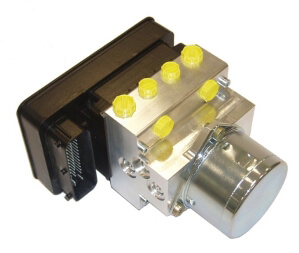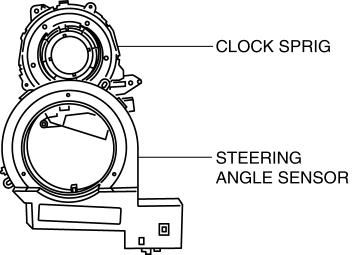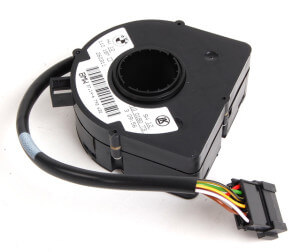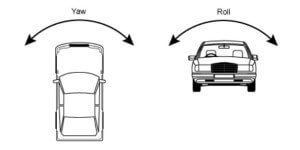What is Traction control and stability control?
How does Traction control and stability control work?
Many drivers don’t understand the difference between Traction control amd stability control and how they work. Here’s a summary of a system used in Ford vehicles. But other manufacturer’s systems are similar.
TCS and SCS systems uses the following components
Wheel speed sensors
ABS wheel speed sensors to detect when a wheel is locked during stop or spinning faster than the other wheels during acceleration.
Electronic brake distribution (EBD) and Hydraulic control unit (HCU)
The Electronic brake distribution (EBD) uses the HCU as an electronic load proportioning

Hydraulic control unit
valve to maintain balanced braking between the front and rear brakes to minimize the chance of rear brake lockup. It also uses the HCU to pulse modulate brake fluid pressure to release and then reapply a locked wheel or to slow down a wheel that’s spinning faster than the others
Stability control sensors
Yaw rate sensor
Roll sensor
Lateral accelerometer
Longitudinal accelerometer
Steering wheel rotation sensor

Steering angle sensor

What is traction control?
A traction control system attempts to prevent excessive wheel spin during acceleration. The TCS system uses inputs from the ABS wheel speed sensor to determine if a wheel has excessive spin. The TCS system can then modulate the brakes to that particular wheel, or it can reduce engine power, or both.
What is stability control?
Stability control monitors the vehicle’s direction of travel and compares it to the

Yaw versus roll
driver’s intended direction of travel as indicated by the driver’s movements on the steering wheel. ESCS also includes roll stability control systems that monitor vehicle roll motion to keep the vehicle stable during sudden or abrupt maneuvers. Once again, the system uses the ABS HCU to modulate brake line pressure to the wheels to bring the vehicle back into normal operation.
What can go wrong?
If you’re driving in snow or ice, traction control can be maddening because the system will continually cut power to the spinning wheel to the point where you can’t accelerate from a stop. In that case, pull over and deactivate the traction control system. Consult your owner’s manual to locate the switch.
When it comes to stability control systems, most problems are caused by the steering wheel angle sensor. GM in particular has had high failure rates on this sensor. If the reading from the sensor is off, the ESCS will determine that the vehicle is out of control and will attempt to correct by reducing power or applying the brakes. Once again, the system works by comparing the driver’s input on the steering wheel to the readings the ESCS system gets from the yaw, lateral, longitudinal, and roll sensors. So if the steering wheel angle sensor is off, the vehicle will constantly try to correct the problem.
Posted on by Rick Muscoplat
